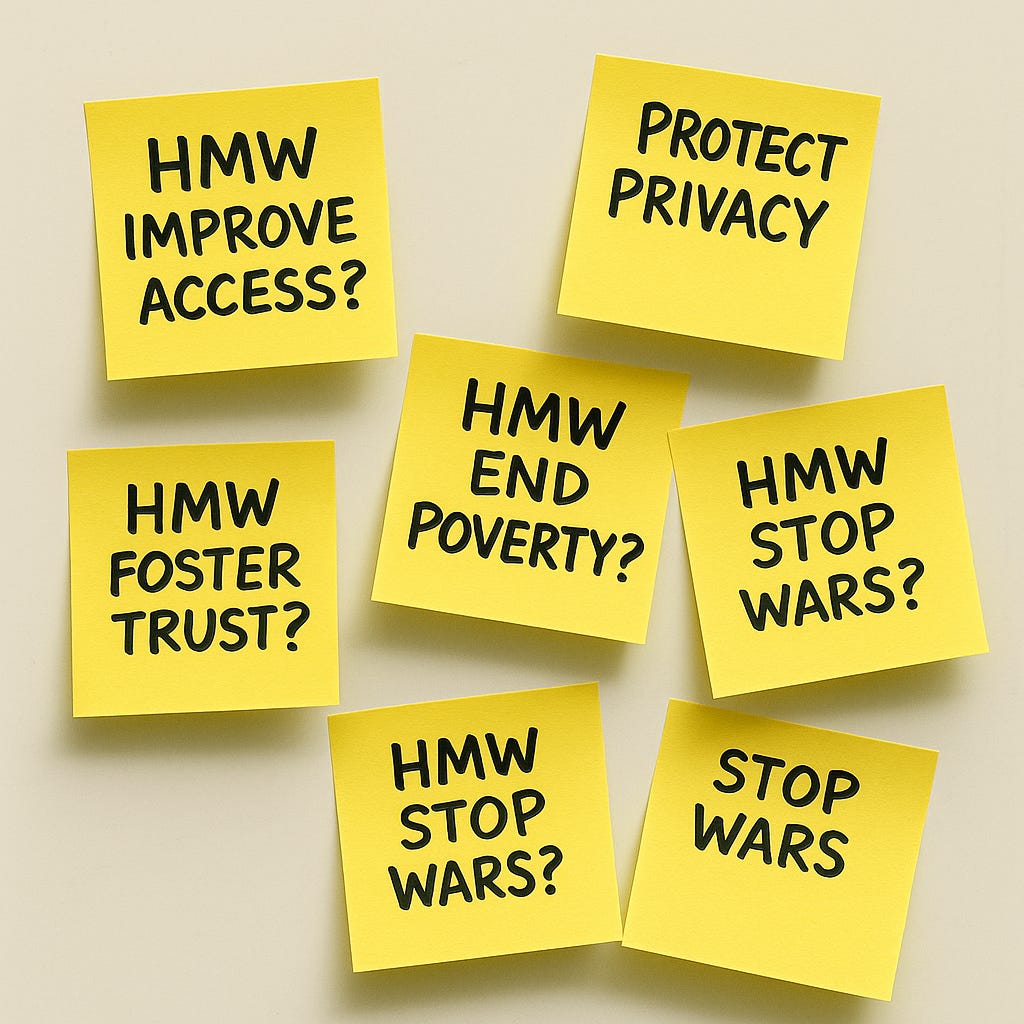The Designer at the End of the World
#004: The design toolkits we inherited are no match for the problems we now face.
Design as a discipline is undergoing a transformation — not just in tools or techniques, but in purpose. Historically, design was born alongside the industrial revolution. Its primary aim was to shape tangible objects for mass production and mass consumption — furniture, appliances, packaging, interfaces. This idea of design as the “form-giver” persisted well into the digital age. Even UX, when it emerged, largely followed this model: design something with a defined scope, hand it off to engineers, and call it a day.
But that day is over.
Designers today are increasingly pulled into high-level strategic discussions. We’re asked to visualize ambiguous futures, facilitate alignment between disciplines, help plan complex omnichannel services, and weigh in on ethical dilemmas surrounding data, automation, and artificial intelligence. And that’s on top of designing screens.
We’ve moved far beyond the domain of objects. Now we’re in the realm of systems, incentives, ecosystems — and in some cases, existential threats. Yet most of our methods are still optimized for shaping artifacts, not untangling the socio-technical and ecological knots that define our world.
How might we... save the world?
I was reminded of this mismatch after rereading Tricia Wang’s provocative Fast Company piece, The most popular design strategy is BS. While I don’t agree with every critique of “How Might We” (it’s a tool, not a strategy), one anecdote stopped me in my tracks:
“Product and UX designer Cyd Harrell tweets: ‘& for real, designers, sticking a “how might we” on the front of wicked problems is not useful…’ When I asked her to elaborate, she said she'd recently been invited to yet another hackathon that launched with 'HMW solve racism?'”
This story gets to the heart of the matter. “How might we” is designed to help frame tractable problems for market-based solutions. It was never meant to address generational injustices, climate collapse, or structural inequality. But design culture, bloated by TED-talk optimism and consultancy-fueled “innovation labs,” has convinced itself otherwise.
…she'd recently been invited to yet another hackathon that launched with 'HMW solve racism?’
Wicked problems and hyperobjects
To begin untangling this, we need better vocabulary. Two concepts help:
Wicked problems are complex, interconnected challenges that have no single solution and often no clear endpoint. You don’t “solve” them so much as you navigate them.
Hyperobjects, as coined by philosopher Timothy Morton and introduced to many designers through Matthew Wizinsky’s Design After Capitalism, are entities so massive in time and space — like climate change, capitalism, or racism — that we can’t fully comprehend them as discrete “things.” They defy our usual ways of seeing and responding.
Here’s the link: hyperobjects give rise to wicked problems. Racism is a hyperobject — persistent, systemic, atmospheric. It spawns wicked problems: disparities in education, wealth, healthcare, policing, housing, opportunity. Tackling these issues requires more than sticky notes and optimism. It demands new coalitions, new ethical frameworks, and new forms of practice.
The design industry is unprepared
The hard truth is that most designers — through no fault of their own — are unequipped to work at this level. Our education and professional environments have optimized us for shaping experiences that sell, convert, delight, or retain. And to be clear, that work still matters. But when we’re called into boardrooms, community planning processes, or ethical reviews of generative AI outputs, our old tools feel brittle. Our questions feel shallow. Our deliverables feel insufficient.
Design itself is becoming a hyperobject — expansive, contradictory, and difficult to see in full. And its inability to evolve quickly enough is a wicked problem of its own.
Toward a new toolkit
We need a new design toolkit — not just in methods, but in posture and responsibility. One that embraces:
Systems thinking beyond user journeys
Futures thinking rooted in history and equity
Community-led design, not just user-centered
Interdisciplinary partnership, not design-led silos
New forms of experimentation, especially in non-digital domains
Slower, more deliberative practices that don’t mistake speed for progress
This newsletter — Systems & Signals — is where I’ll be exploring those topics and sharing ideas for the road ahead. Some will be practical, some philosophical. Some will be critiques of our field, and others will highlight examples of what’s working in the wild. I’ll also bring in voices from policy, urban planning, cooperative economics, and other adjacent practices that design must learn from.
The good news: some of these toolkits already exist — or at least offer pieces of the puzzle. For example:
Systemic Design Toolkit, which blends systems thinking with participatory design to address complexity
Liberatory Design, which embeds equity, self-reflection, and co-creation into every step of the process
Design Justice Principles, which center those most impacted by the systems we aim to redesign
Transition Design, which frames design as a long-term tool for societal transformation
I’ll be breaking down these and other frameworks in future issues of Systems & Signals, with critical analysis, real-world use cases, and reflections on how they stack up to the challenges of our time.
Your turn
Design’s altitude of influence is rising — but if we don’t evolve our methods, we’re going to crash into the clouds.
So this is an invitation. What do you think of wicked problems, hyperobjects, and design’s expanding role in society? What skills, alliances, or ways of working do you think are missing from the conversation? Let’s figure it out together.




